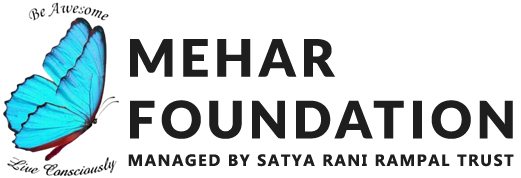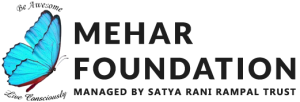About Addiction
Complete Information About Addiction
An addiction is a habitual mental and physical dependence on a substance or practice beyond one’s voluntary control which is characterized by well-defined physiological symptoms upon withdrawal.
A person with addiction usually has 3 or more of the following:
Signs and Symptoms of Addiction:
- A tolerance for the substance or practice that requires increasing amounts to achieve the same effect.
- Strong cravings for the substance or practice.
- Being unable to stop using the substance or practice without going through withdrawal.
- Loss of control over frequency and amounts of drug or substance usage.
- Preoccupation with the substance or practice.
- Inability to meet obligations to family, job, or other personal interests because of the substance or practice.
- Physical or psychological deterioration due to use of the substance or practice.
Types of Addiction:
- Alcohol
- Illegal drugs
- Prescription drugs
Alcoholism
Alcoholism is a disease characterized by the habitual intake of alcohol. The definition of alcoholism is chronic alcohol use to the degree that it interferes with physical or mental health, or with normal social or work behavior.
Alcoholism is a disease that produces both physical and psychological addiction. Alcohol is a central nervous system depressant that reduces anxiety, inhibition, and feelings of guilt. It lowers alertness and impairs perception, judgment, and motor coordination. In high doses, it can cause loss of consciousness and even death. Alcoholism is a disease that damages the brain, liver, heart, and other organs.
Sign & Symptoms of Alcoholism
- Increasing tolerance to the effects of alcohol. You may have heard the expression that someone can “hold their liquor.” This is not a sign that this person will not have problems with alcohol; in fact, this may be an early sign of alcoholism as a disease.
- A growing preoccupation with or interest in drinking. Also drinking alone or drinking before an activity where there will be drinking. It may seem as though one simply enjoys drinking. We now know that these can be part of the definition of alcoholism.
- A person will dispute their drinking is a problem. This symptom, called denial, is almost always present in the disease of alcoholism.
- Later, difficulties in relationships, on the job, or with the law often occur.
- Hiding alcohol or sneaking drinks.
- Gulping the first few drinks.
- Wanting to drink more, or longer, than the rest of the crowd.
- Losing control of drinking, leading to attempts to control it.
Illegal Drugs
The epidemic of substance abuse in young generation has assumed alarming dimensions in India. Changing cultural values, increasing economic stress and dwindling supportive bonds are leading to initiation into substance use. Cannabis, Cocaine, Heroin, Methamphetamine, LSD, Opium, MDMA, DMT drugs are the most frequently abused drugs in India. Drug use, misuse or abuse is also primarily due to the nature of the drug abused, the personality of the individual and the addict’s immediate environment. Cannabis products, often called charas, bhang, or ganja, are abused throughout the country.
Sign & Symptoms of Illegal Drugs
Appearance:
- Dilated pupils
- Runny nose (snorting)
- Nosebleeds (snorting)
- Track marks (injecting)
- Burned lips or fingers (smoking)
Heart:
- Fast heart rate
- Constricted blood vessels
- Enlarged Heart
- Heart attacks
- Cardiac arrest
Mental State:
- Euphoria
- Overconfidence
- Unusual excitement
- Aggressiveness
- Paranoia
- Poor judgment
- Delusions
Prescription Drugs
Taking prescription drugs in a way that hasn’t been recommended by a doctor can be more dangerous than people think. In fact, it’s drug abuse. And it’s illegal, just like taking street drugs. Some people abuse prescription drugs because they think they will help them have more fun, lose weight, fit in, and even study more effectively. Prescription drugs are only safe for the people who have prescriptions for them. That’s because a doctor has examined these people and prescribed the right dose of medicine for their medical condition. The doctor has also told them exactly how they should take the medicine, including things to avoid while taking the drug. They also are aware of side effects and can watch patients closely for these.
The most commonly used prescription drugs fall into three classes:
1. Opioids
- Examples: oxycodone (OxyContin), hydrocodone (Vicodin), and meperidine (Demerol)
- Medical uses: Opioids are used to treat pain or relieve coughs or diarrhea.
- How they work: Opioids attach to opioid receptors in the central nervous system (the brain and the spinal cord), preventing the brain from receiving pain messages.
2. Central Nervous System (CNS) Depressants
- Examples: phenobarbital (Luminal), diazepam (Valium), and alprazolam (Xanax)
- Medical uses: CNS depressants are used to treat anxiety, tension, panic attacks, and sleep disorders.
- How they work: CNS depressants slow down brain activity by increasing the activity of a neurotransmitter called GABA. The result is a drowsy or calming effect.
3. Stimulants
- Examples: methylphenidate (Ritalin) and amphetamine/dextroamphetamine (Adderall)
- Medical uses: Stimulants can be used to treat narcolepsy and ADHD.
- How they work: Stimulants increase brain activity, resulting in greater alertness, attention, and energy.
What Are the Dangers of Abusing Medicines?
Like all drug abuse, using prescription drugs for the wrong reasons has serious risks for a person’s health.
Opioid abuse can lead to vomiting, mood changes, decrease in ability to think (cognitive function), and even decreased respiratory function, coma, or death. This risk is higher when prescription drugs like opioids are taken with other substances like alcohol, antihistamines, and CNS depressants.
CNS depressant abuse is risky too. Abruptly stopping or reducing them too quickly can lead to seizures. Taking CNS depressants with other medicines, such as prescription painkillers, some over-the-counter cold and allergy medicines, or alcohol can slow a person’s heartbeat and breathing — and even kill.
Stimulant abuse (like with some ADHD drugs) may cause heart failure or seizures. These risks are increased when stimulants are mixed with other medicines — even OTC ones like cold medicines. Taking too much of a stimulant can lead to a dangerously high body temperature or an irregular heartbeat. High doses over a short period may make someone aggressive or paranoid. Stimulant abuse might not lead to physical dependence and withdrawal, but users might take the drugs so often that they become a hard habit to break.

Contact Us
Our Services
Quick Link
Quick Link
- Open Rehab Centre in Chandigarh
- Open Rehab Centre in India
- Rehabilitation Centre in Chandigarh
- Drug Rehabilitation Centre in India
- Rehabilitation Centre in Punjab
- Nasha Mukti Kendra in Punjab
- Nasha Mukti Kendra in Chandigarh
- Alcohol Rehab Centre in Chandigarh
- De Addiction Centre in North India
- Drug Rehab Centre in North India
- De Addiction Centre in Chandigarh
- Drug Rehab Centre in Haryana
- Nasha Mukti Kendra in Haryana
- Alcohol Rehab Centre in Yamunanagar
- Nasha Mukti Kendra in Yamunanagar
- De Addiction Centre in Yamunanagar
- De Addiction Centre in Delhi
- Alcohol Rehab Centre in Delhi
- Nasha Mukti Kendra in Delhi
- Nasha Mukti Kendra in Ambala
- De Addiction Centre in Ambala
Copyright ©2023 All Rights Reserved | Mehar Foundation Managed by the Satya Rani Rampal Trust | Developed by Webmetasolutions.com

